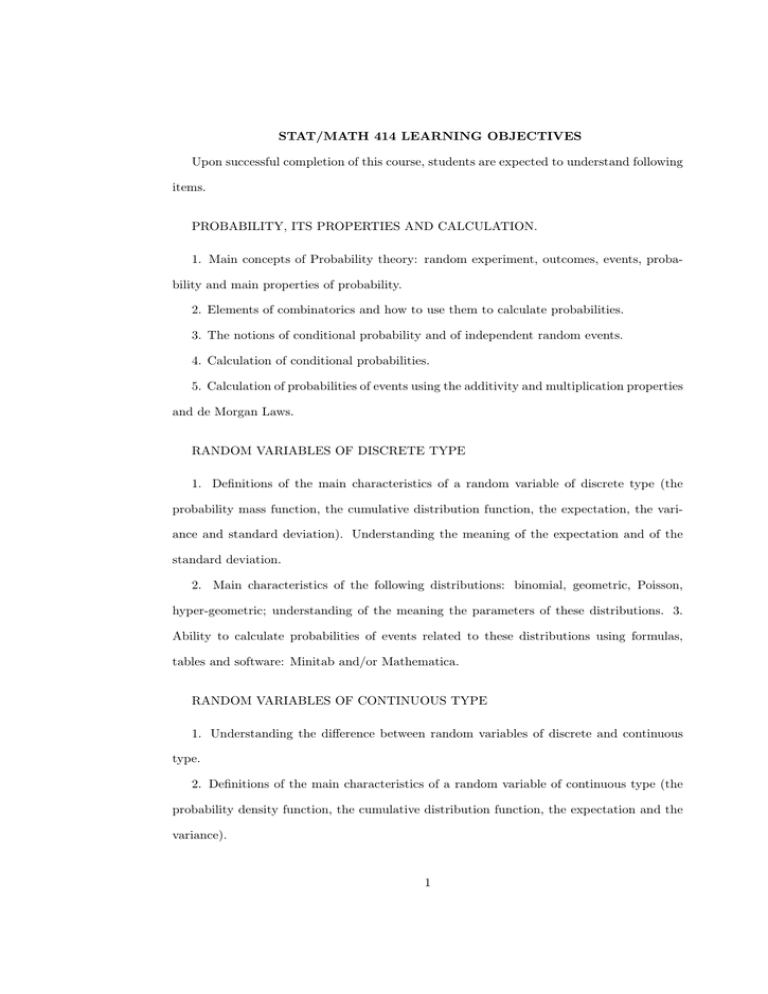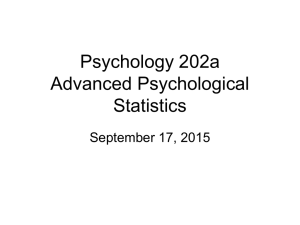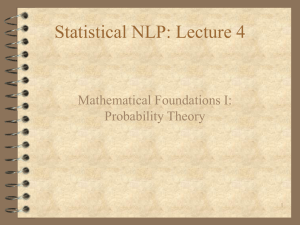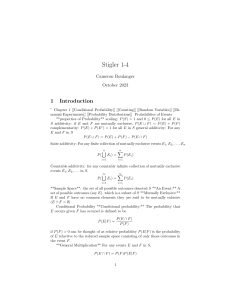STAT/MATH 414 LEARNING OBJECTIVES Upon successful
advertisement

STAT/MATH 414 LEARNING OBJECTIVES Upon successful completion of this course, students are expected to understand following items. PROBABILITY, ITS PROPERTIES AND CALCULATION. 1. Main concepts of Probability theory: random experiment, outcomes, events, probability and main properties of probability. 2. Elements of combinatorics and how to use them to calculate probabilities. 3. The notions of conditional probability and of independent random events. 4. Calculation of conditional probabilities. 5. Calculation of probabilities of events using the additivity and multiplication properties and de Morgan Laws. RANDOM VARIABLES OF DISCRETE TYPE 1. Definitions of the main characteristics of a random variable of discrete type (the probability mass function, the cumulative distribution function, the expectation, the variance and standard deviation). Understanding the meaning of the expectation and of the standard deviation. 2. Main characteristics of the following distributions: binomial, geometric, Poisson, hyper-geometric; understanding of the meaning the parameters of these distributions. 3. Ability to calculate probabilities of events related to these distributions using formulas, tables and software: Minitab and/or Mathematica. RANDOM VARIABLES OF CONTINUOUS TYPE 1. Understanding the difference between random variables of discrete and continuous type. 2. Definitions of the main characteristics of a random variable of continuous type (the probability density function, the cumulative distribution function, the expectation and the variance). 1 3. Main characteristics of the following distributions: uniform, exponential, normal, gamma; understanding of the meaning the parameters of these distributions. 4. Ability to calculate probabilities of events related to these distributions using formulas, tables and software: Minitab and/or Mathematica. 5. Understanding of models of aging: exponential, Weibull, Gompertz. PROPERTIES OF RANDOM VARIABLES 1. Functions of random variables. 2. Order statistics. 3. Independent random variables. 3. The Law of Large Numbers. 4. The Central Limit Theorem for i.i.d. random variables. 5. Approximation of the binomial distribution by the Poisson and the normal distributions (the Poisson and the De Moivre - Laplace Theorems). BIVARIATE DISTRIBUTIONS. 1. Bivariate distributions of discrete and continuous type. 2. Correlation function and correlation coefficient. 3. Conditional distributions. 4. Bivariate normal distribution. 2





